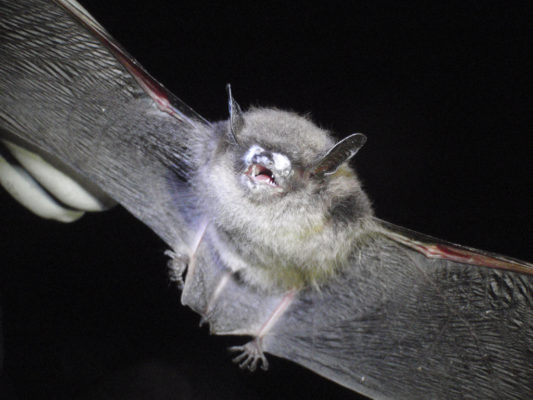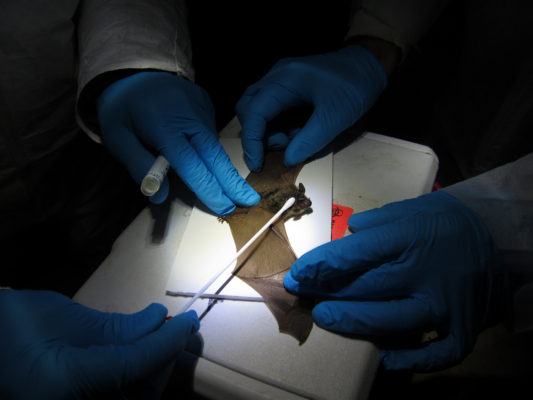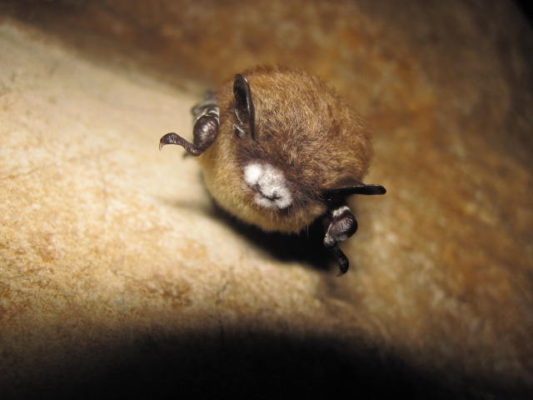More than seven million hibernating bats were killed by a disease known as white-nose syndrome in 2006 and the disease shows no sign of abating, threatening Texas bats, officials said.
Area bats, which play an important role in our society eating pesky insects and pollinating plants, have not caught the disease. However, bats in Central Texas have shown signs of the disease lately, said Rick LoBello, educational curator at the El Paso Zoo.
The disease “travels about 200 miles a year,” said Rod Horrocks, a cave management specialist at Carlsbad Caverns National Park said.
It is inevitable area bats will contract the disease in coming years, LoBello said.
The U.S. Fish and Wildlife Service reports that the disease has been known to kill up to 100 percent of bat colonies across the country.
White-nose syndrome is caused by a fungus which thrives in dark and damp places. Since bats tend to hibernate in this type of environment it’s easily transmitted from bat to bat.
Humans can also spread this disease by traveling from one cave to another without cleaning and disinfecting their shoes, clothes, and any equipment they might bring.
This is a common issue as travelers from all over visit Carlsbad by the thousands each month. A family visiting Carlsbad had just come from Arkansas which has high white-nose syndrome activity in their northwestern area of the state.

This brown bat found in the Avery County mine shows positive signs of WNS and can be seen with the white fungus on its nose. Photo credit: U.S Fish and Wildlife Service
It’s most easily distinguishable by a white powdery substance on the bat’s nose and sometimes on the wings as well. It’s not toxic, however, to humans or pets.
According to data collected by the White-NoseSyndrome.org, the fungus was first spotted in the east coast, but due to bat migration as well as suspected human involvement, the disease has now been spotted as far as Texas as of 2017.
LoBello said: “As of now, no one is exactly sure why or how this fungus really showed up. It’s killing bat colonies across North America and is a major concern to bat conservation.”
In order to study this disease and work on the prevention of WNS, the U.S Fish, and Wildlife Service awarded $32,719 dollars to the Texas Wildlife Department to monitor the movement of the disease.

A bat being tested for white-nose syndrome.
It is active in 32 states as well as five provinces in Canada including major tourist spots like Ontario and Quebec.
LoBello says this reduction in the bat population comes with a price. As the bats die off, we lose a natural resource which helps keep the insect population down.
“The best way people can get involved is to become self-aware of your surroundings as well as to keep in touch with local bat conservations,” LoBello said.

Bat with White-nose Syndrome in Great Smoky Mountains National Park. Photo credit: U.S Fish and Wildlife Service
The closest major bat colony to El Paso is located at Carlsbad National Caverns. During the summer, rangers entertain guests with the nightly bat flights and the cave is open from May to September for visitors to hike.
However, this could change soon. Horrocks said that white-nose syndrome is knocking at the door of Carlsbad. They’re doing what they can to prevent it, but he foresees the fungus infecting the cave in the near future.
